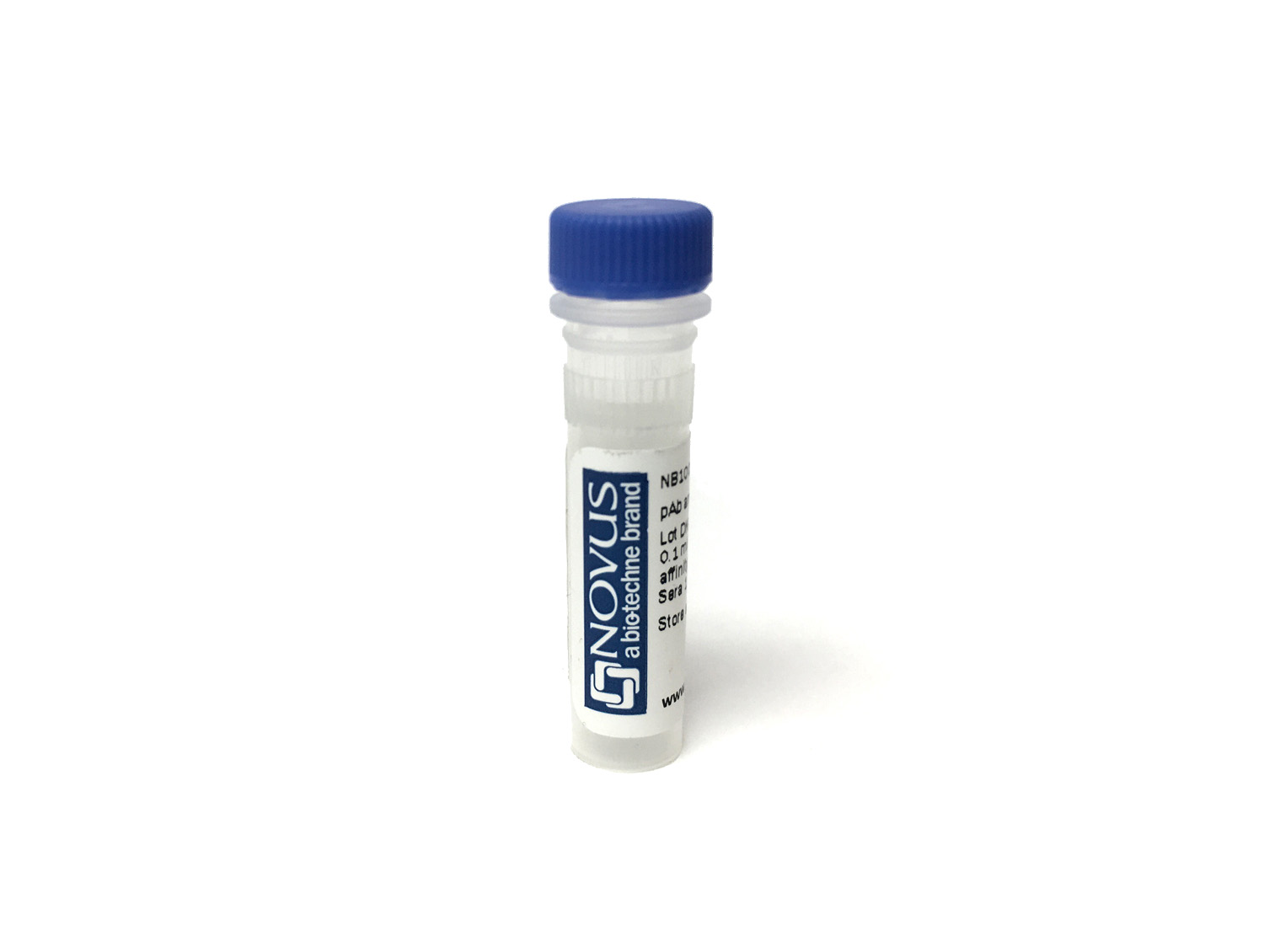VP1 Antibody [DyLight 755]
Novus Biologicals, part of Bio-Techne | Catalog # NB100-93575IR


Conjugate
Catalog #
Forumulation
Catalog #
Key Product Details
Species Reactivity
Adeno-associated Virus (AAV)
Applications
Immunocytochemistry/ Immunofluorescence, Immunohistochemistry, Western Blot
Label
DyLight 755 (Excitation = 754 nm, Emission = 776 nm)
Antibody Source
Polyclonal Rabbit IgG
Concentration
Please see the vial label for concentration. If unlisted please contact technical services.
Product Specifications
Immunogen
Synthetic peptide within residues 70-90 of major coat protein VP3 [AAV 2], residues 270-290 of capsid protein VP1 [AAV 6], and residues 270-290 of capsid [AAV 3].
Reactivity Notes
0
Specificity
Adeno-Associated Virus (AAV)
Clonality
Polyclonal
Host
Rabbit
Isotype
IgG
Applications for VP1 Antibody [DyLight 755]
Application
Recommended Usage
Immunocytochemistry/ Immunofluorescence
Optimal dilutions of this antibody should be experimentally determined.
Immunohistochemistry
Optimal dilutions of this antibody should be experimentally determined.
Western Blot
Optimal dilutions of this antibody should be experimentally determined.
Application Notes
Optimal dilution of this antibody should be experimentally determined.
Formulation, Preparation, and Storage
Purification
Immunogen affinity purified
Formulation
50mM Sodium Borate
Preservative
0.05% Sodium Azide
Concentration
Please see the vial label for concentration. If unlisted please contact technical services.
Shipping
The product is shipped with polar packs. Upon receipt, store it immediately at the temperature recommended below.
Stability & Storage
Store at 4C in the dark.
Background: VP1
References
1. Zengel J, Carette JE. Structural and cellular biology of adeno-associated virus attachment and entry. Adv Virus Res. 2020;106:39-84. https://doi.org/10.1016/bs.aivir.2020.01.002
2. Wu Z, Asokan A, Samulski RJ. Adeno-associated virus serotypes: vector toolkit for human gene therapy. Mol Ther. 2006;14(3):316-327. https://doi.org/10.1016/j.ymthe.2006.05.009
3. Drouin LM, Agbandje-McKenna M. Adeno-associated virus structural biology as a tool in vector development. Future Virol. 2013;8(12):1183-1199. https://doi.org/10.2217/fvl.13.112
4. Santiago-Ortiz JL, Schaffer DV. Adeno-associated virus (AAV) vectors in cancer gene therapy. J Control Release. 2016;240:287-301. https://doi.org/10.1016/j.jconrel.2016.01.001
Alternate Names
AAV, AAV2, Adeno-Associated Virus, Adeno-Associated Virus (AAV)
Additional VP1 Products
Product Documents for VP1 Antibody [DyLight 755]
Product Specific Notices for VP1 Antibody [DyLight 755]
DyLight (R) is a trademark of Thermo Fisher Scientific Inc. and its subsidiaries.
This product is for research use only and is not approved for use in humans or in clinical diagnosis. Primary Antibodies are guaranteed for 1 year from date of receipt.
